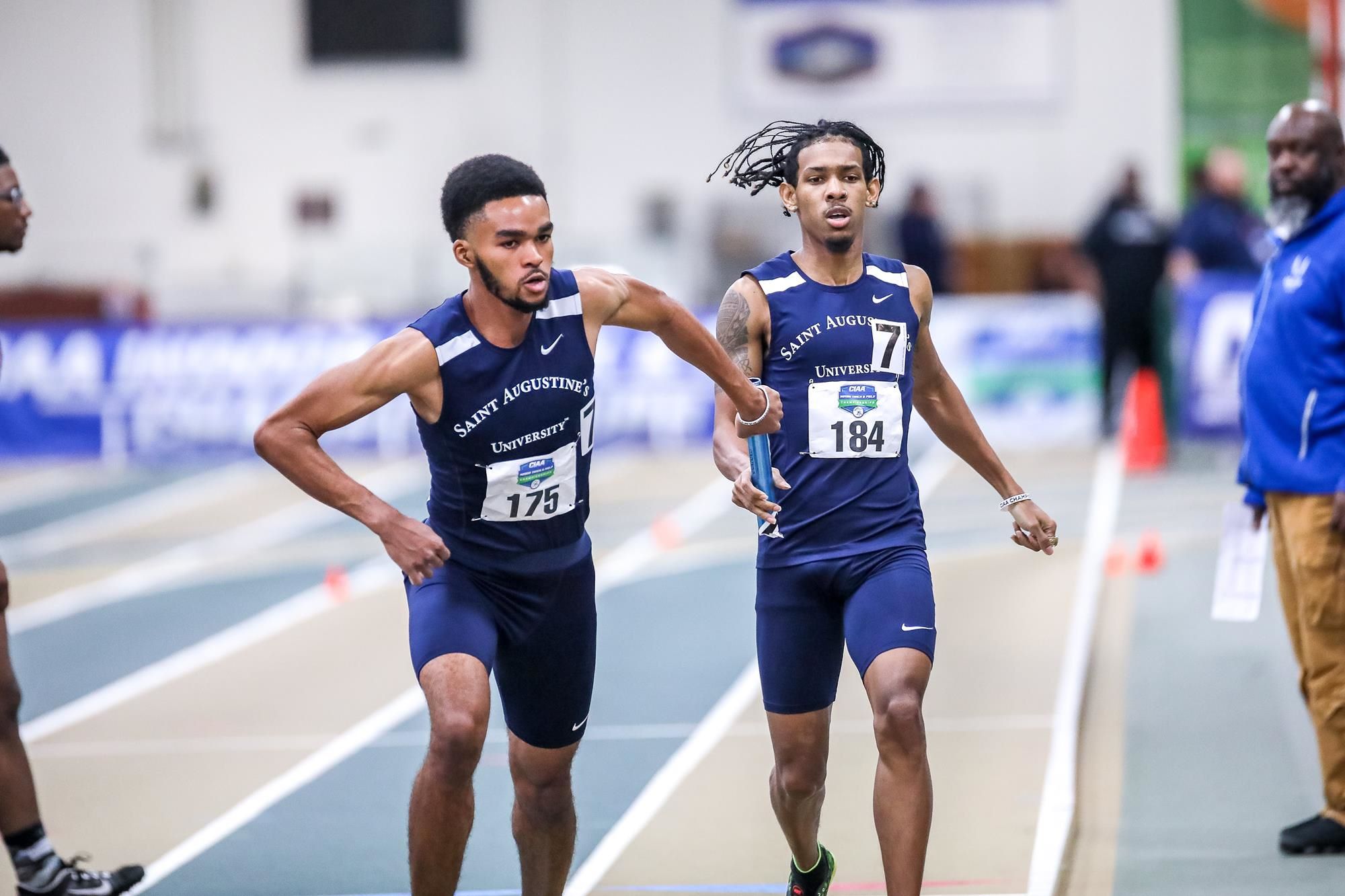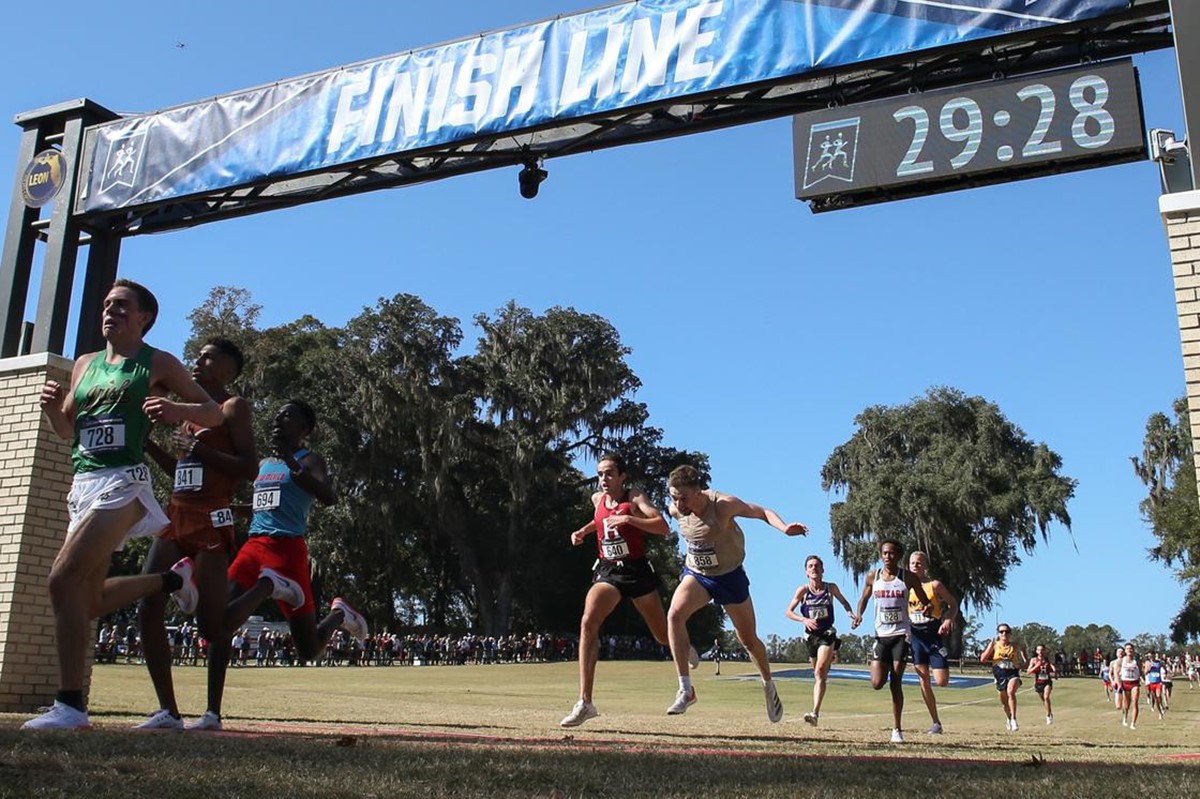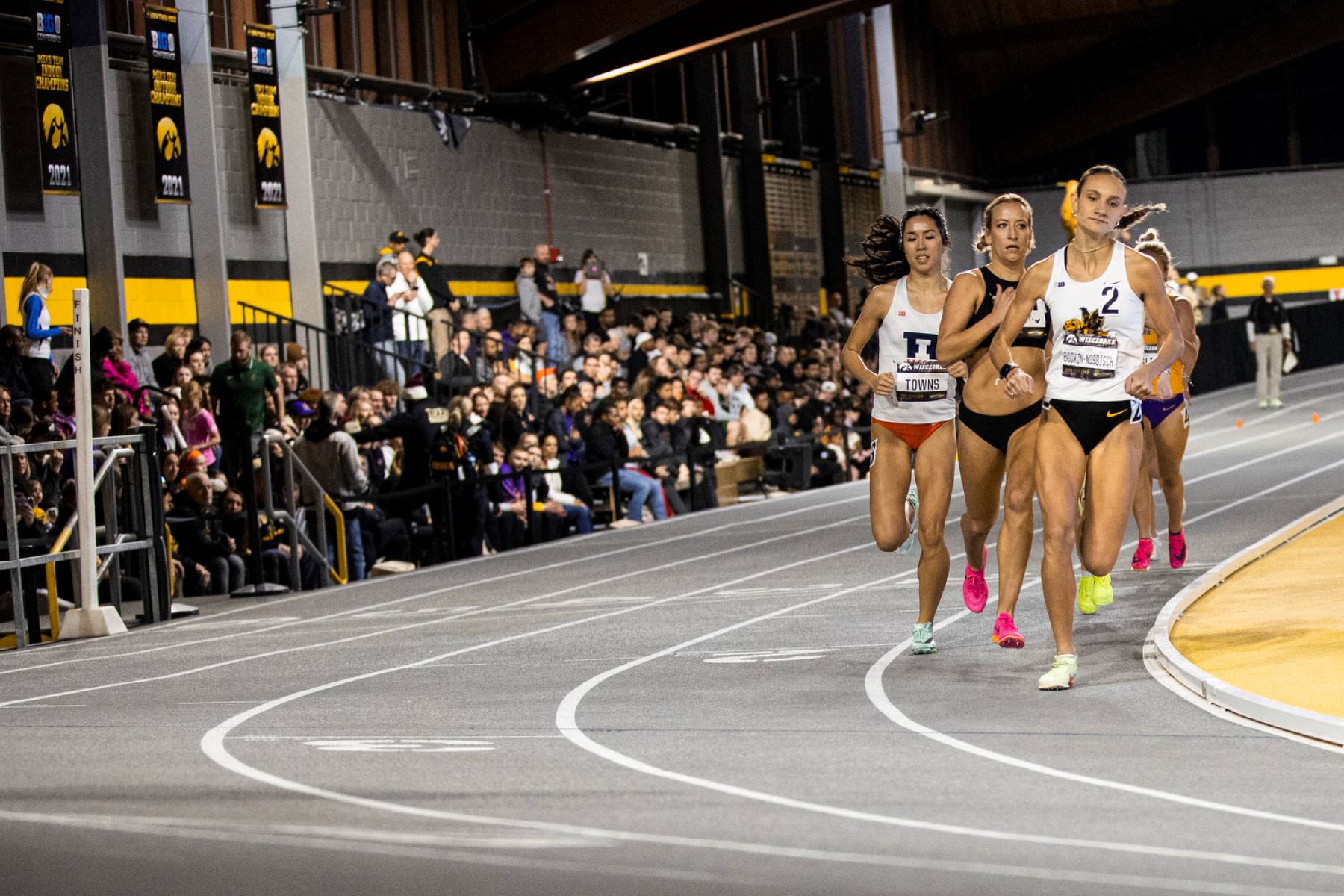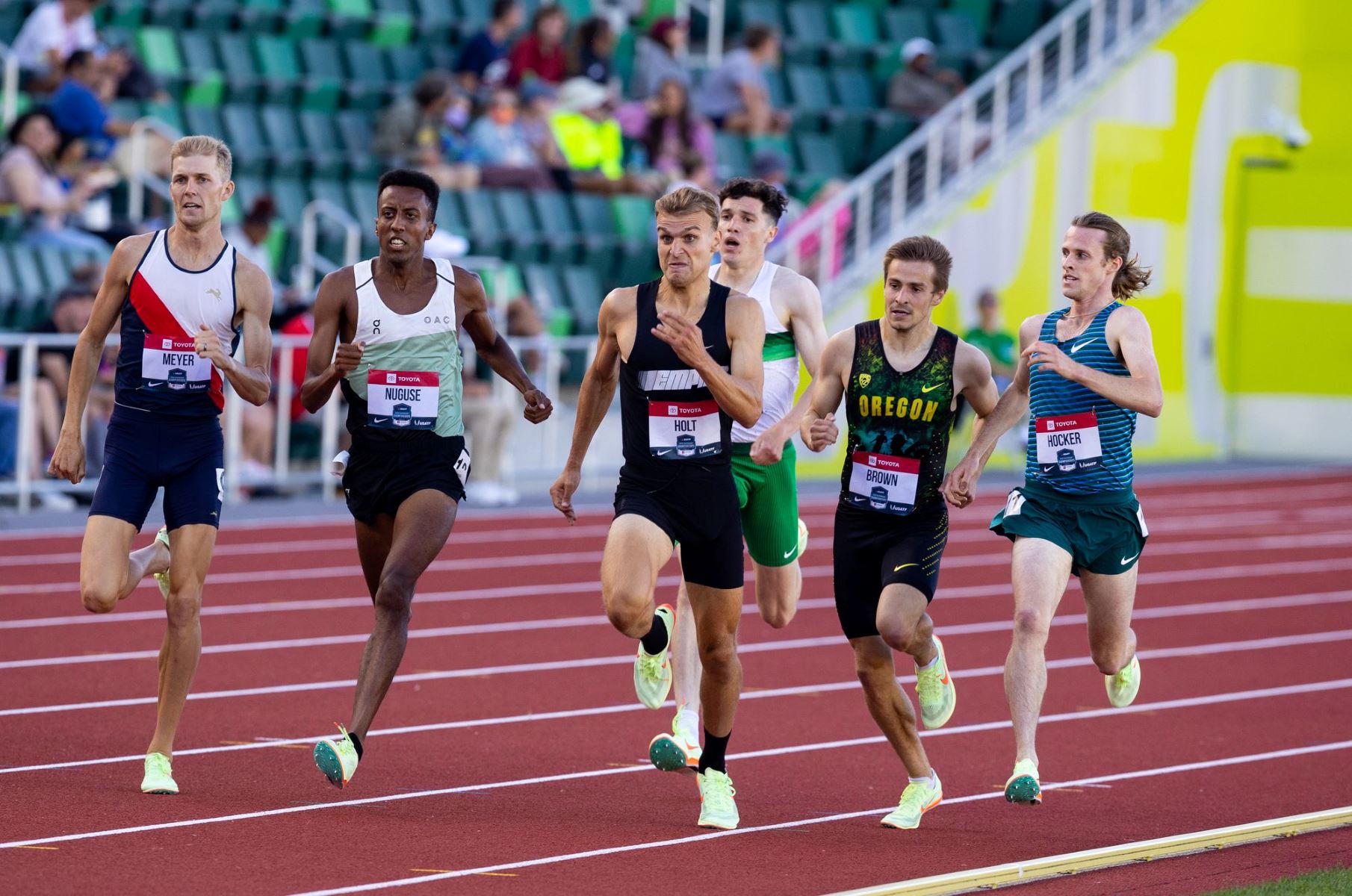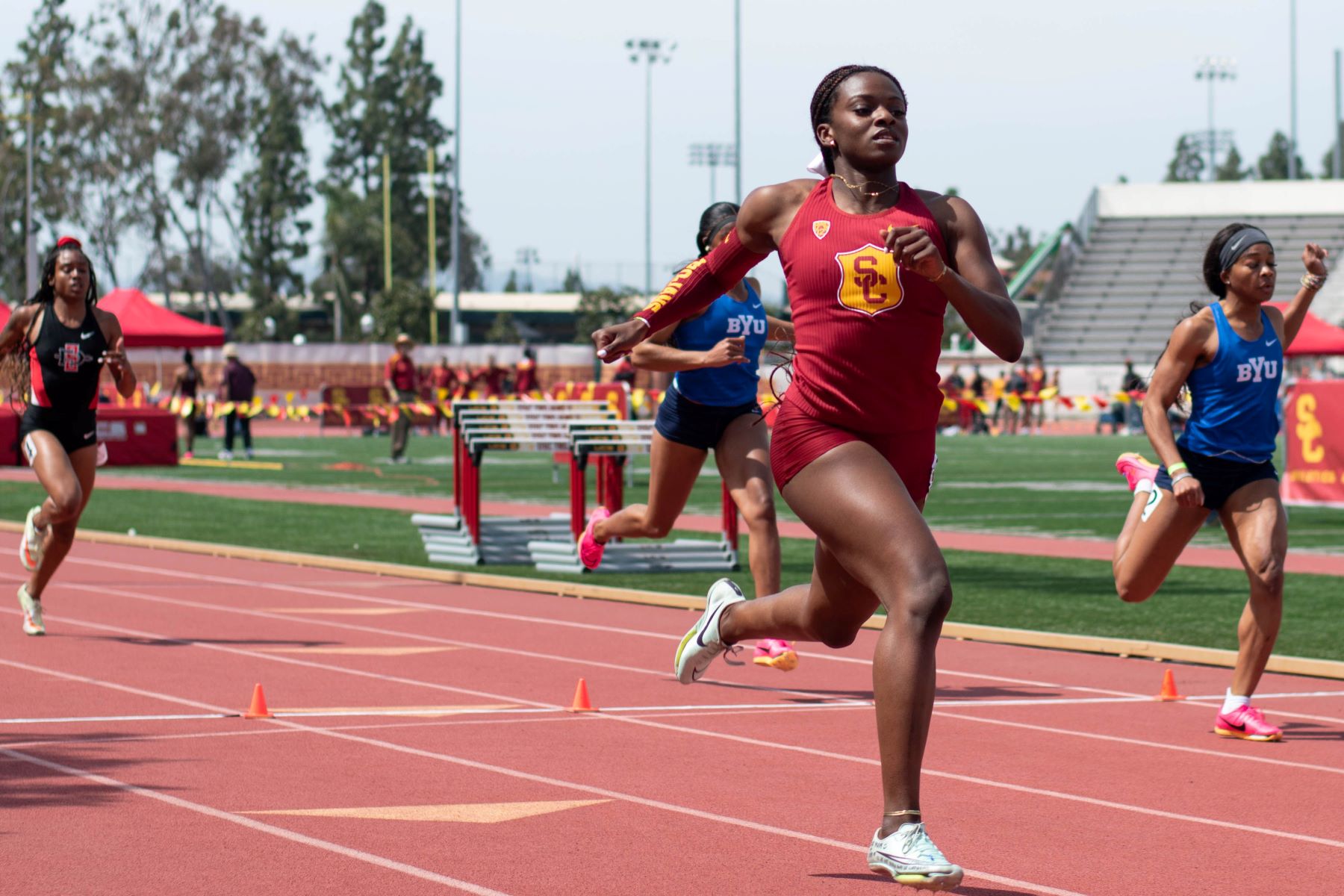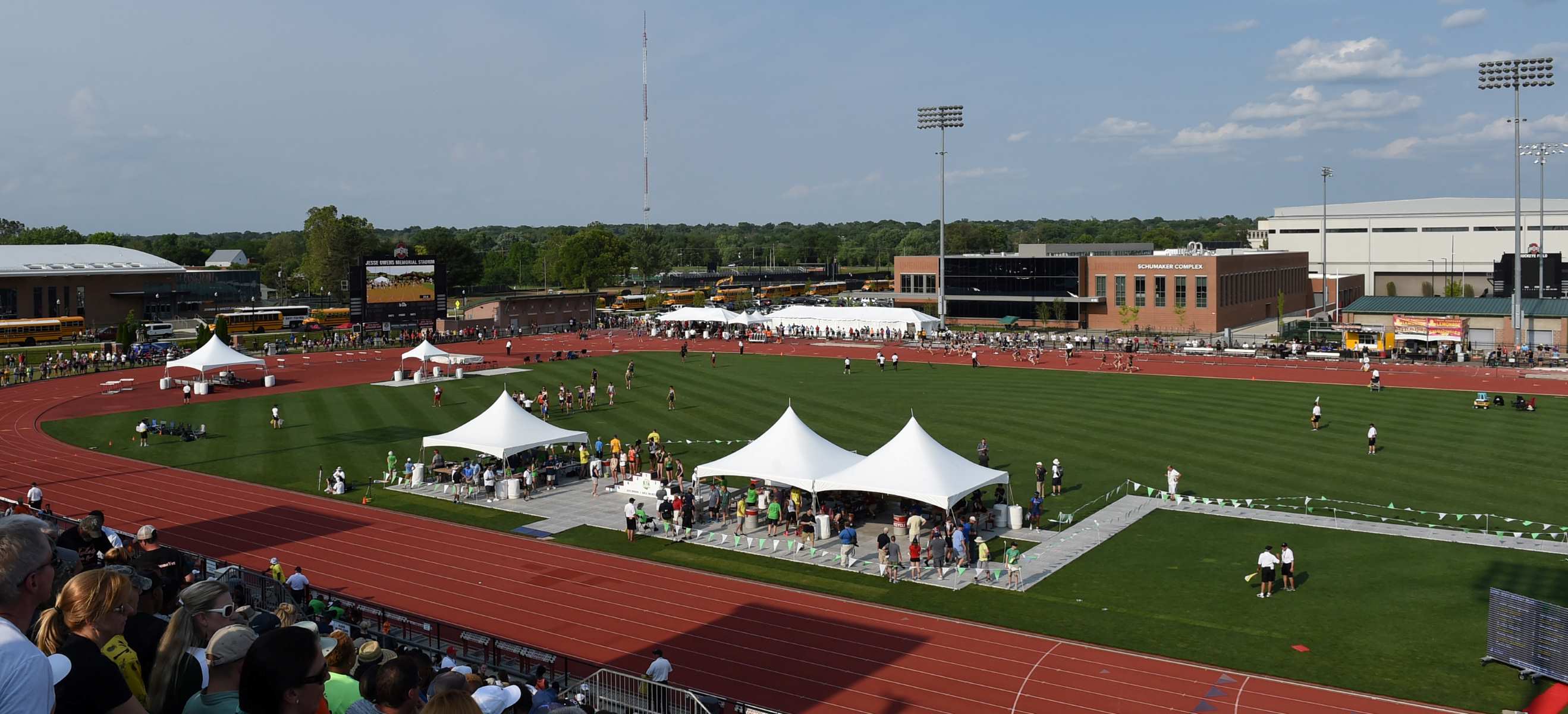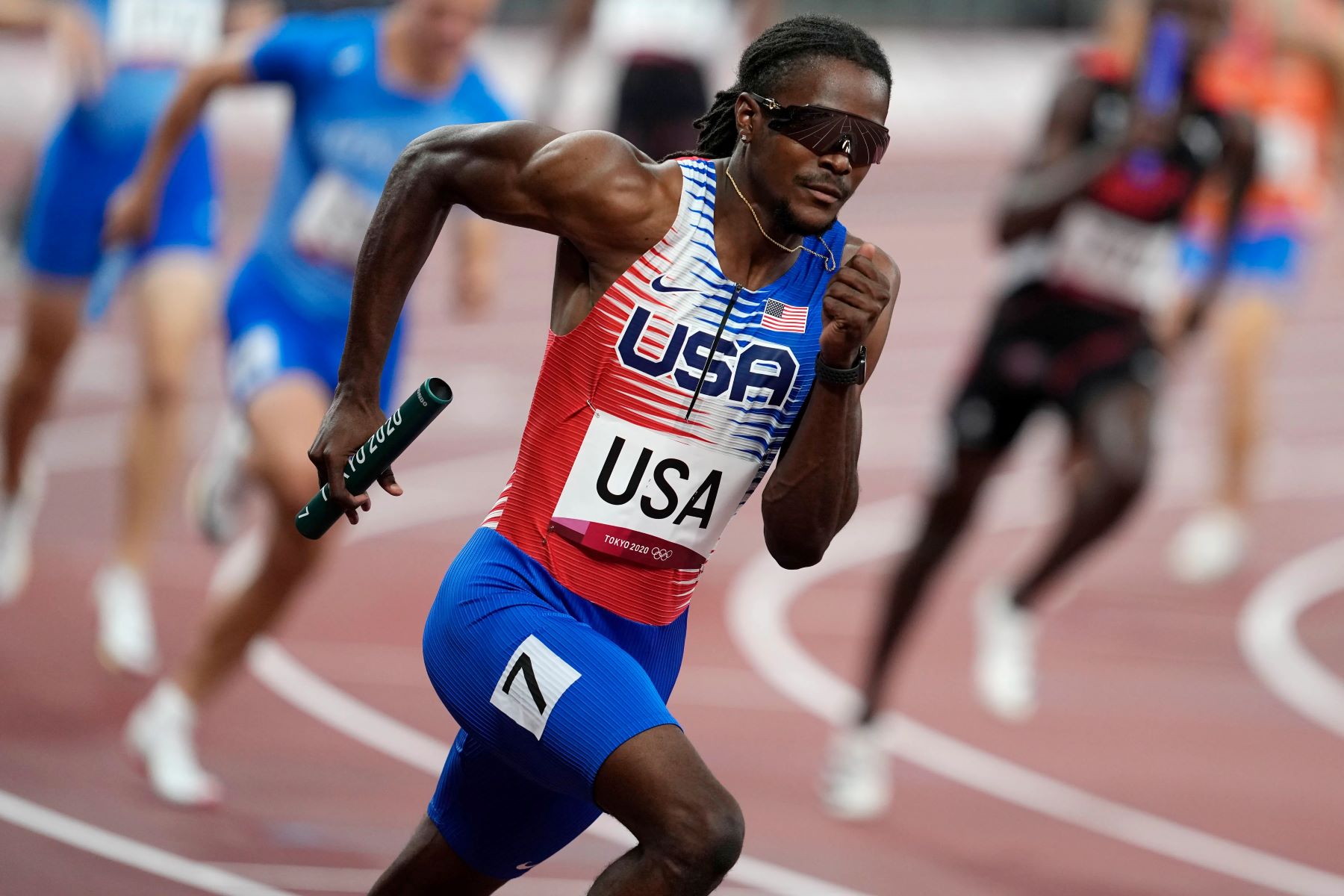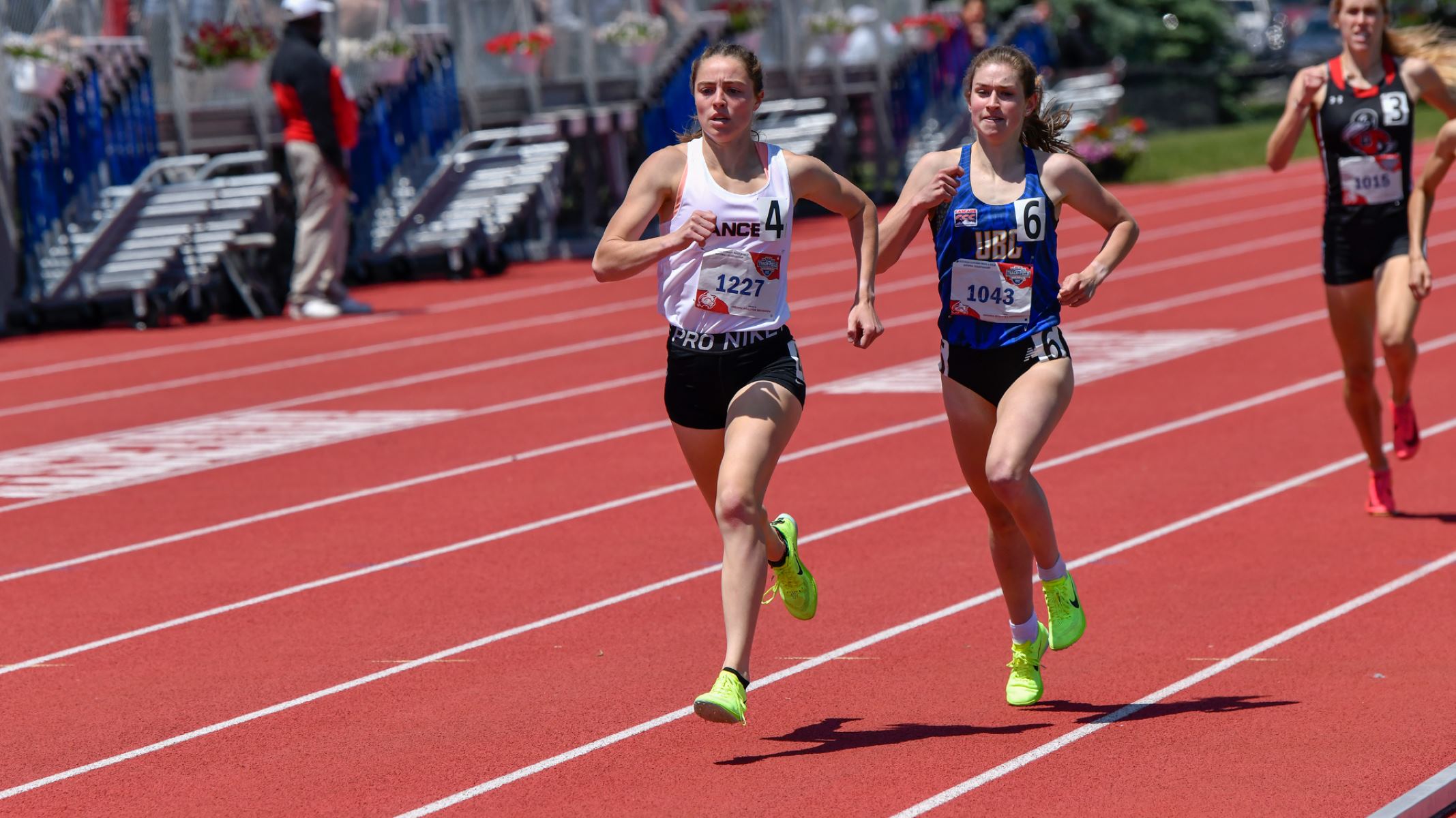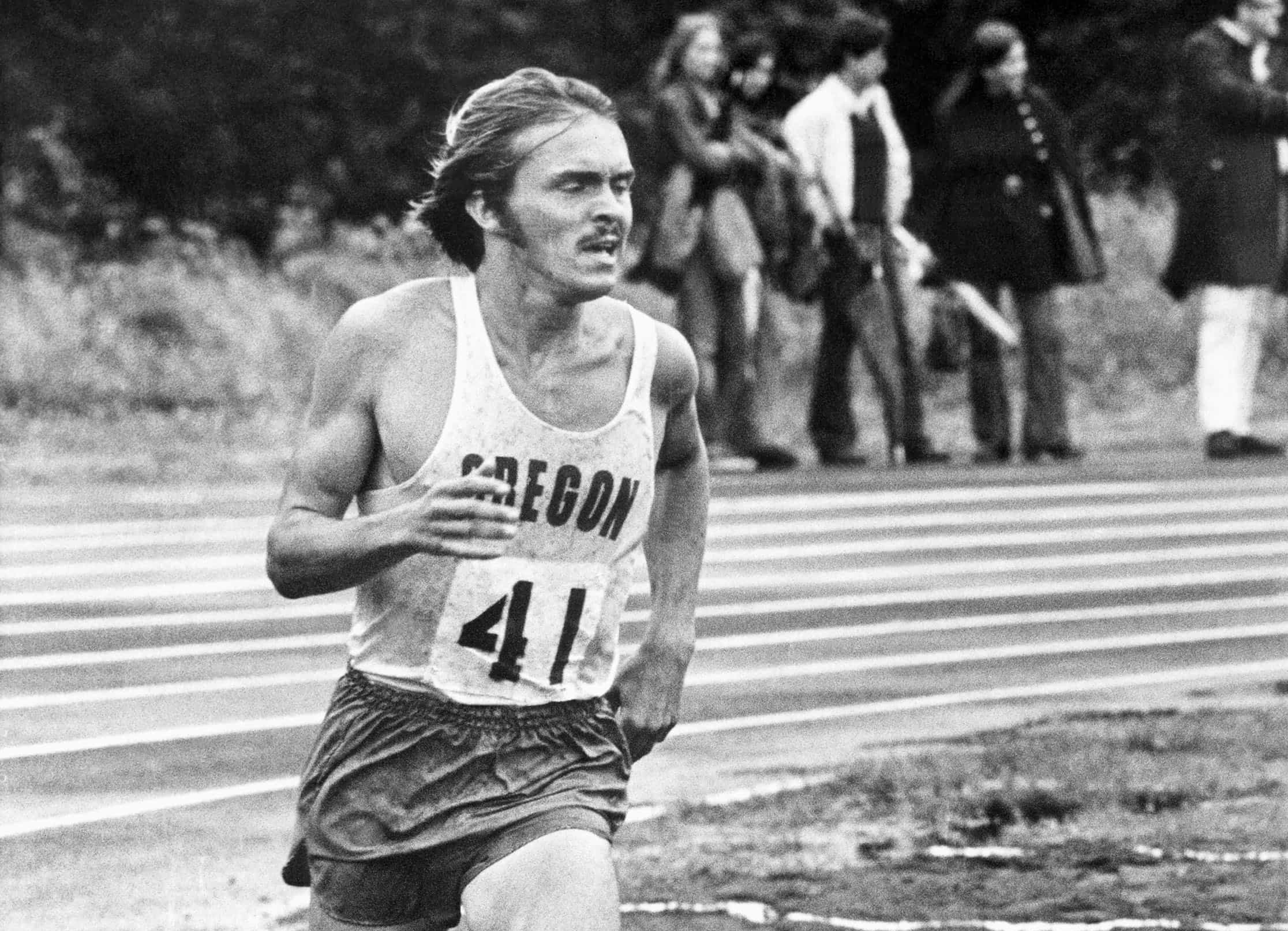Home>Misc>Featured>When Is The NCAA Track And Field Championships
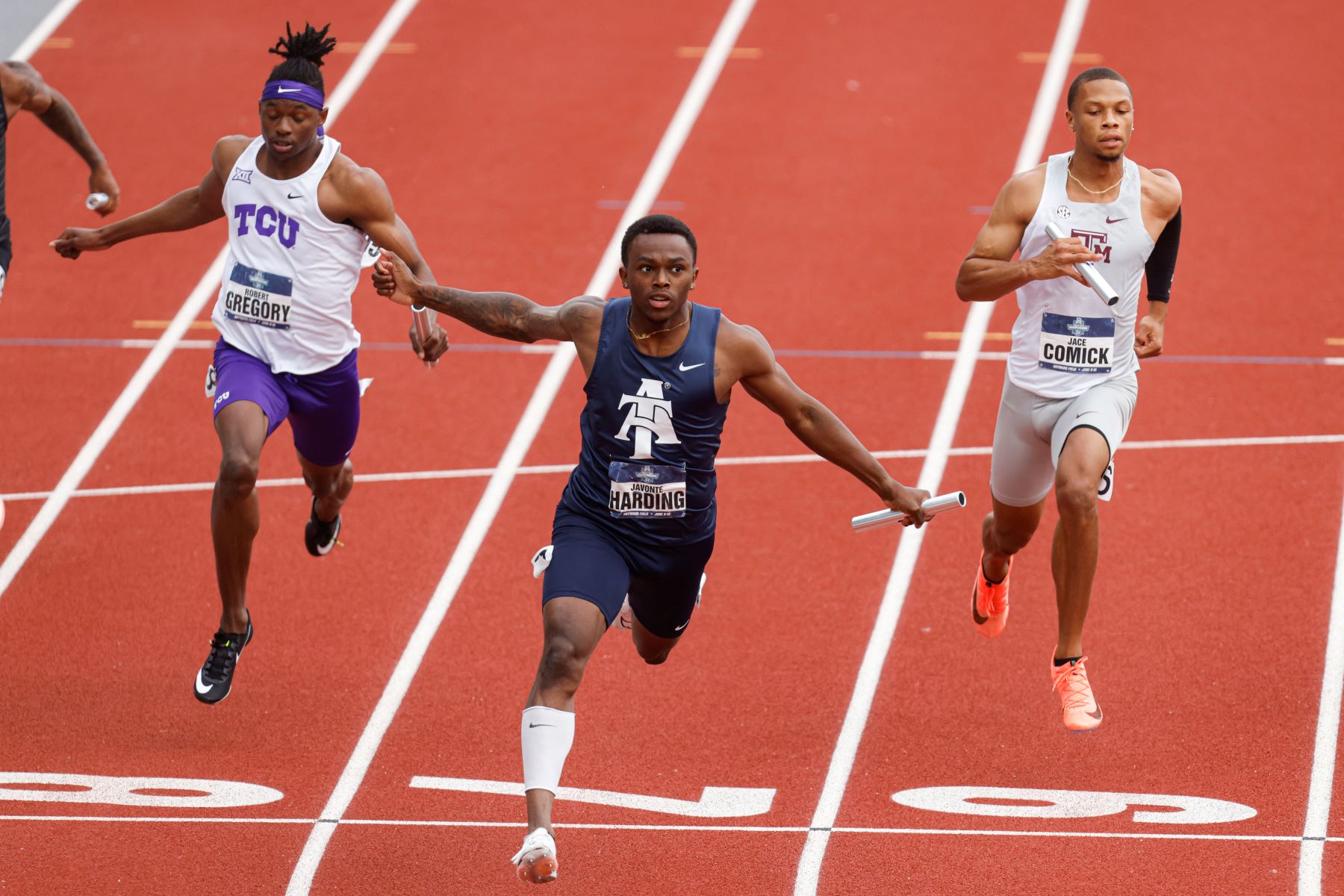

Featured
When Is The NCAA Track And Field Championships
Modified: January 22, 2024
Featured coverage of the NCAA Track and Field Championships - Find out when this thrilling event takes place and watch the top athletes compete for glory.
Overview of NCAA Track and Field Championships
The NCAA Track and Field Championships is an annual event that showcases the best collegiate athletes in the sport. It is widely regarded as one of the most prestigious competitions in collegiate athletics and draws athletes from universities across the United States.
Founded in 1921, the championships provide a platform for athletes to showcase their skills and compete against the best in their respective events. The event takes place over several days, featuring a wide range of track and field disciplines, such as sprints, distance races, jumps, throws, and relays.
Attracting both individual athletes and teams, the NCAA Track and Field Championships offer a chance for athletes to earn national recognition and prove themselves among their peers. The competition not only highlights individual talent but also promotes the spirit of teamwork and camaraderie among participating universities.
The championships are governed by the National Collegiate Athletic Association (NCAA), an organization that oversees athletic programs in colleges and universities across the United States. The NCAA ensures fairness, sportsmanship, and adherence to rules and regulations throughout the event.
Each year, the NCAA Track and Field Championships generate significant excitement and anticipation among athletes, coaches, fans, and the wider sporting community. The event provides an opportunity for athletes to shine on a national stage and potentially earn All-American status for their performances.
Furthermore, the NCAA Track and Field Championships serve as a pathway for athletes to qualify for international competitions, such as the Olympics or World Championships. The championships bring together some of the top talents in collegiate track and field, setting the stage for thrilling performances and record-breaking achievements.
Overall, the NCAA Track and Field Championships represent the pinnacle of collegiate track and field competition in the United States. It showcases the dedication, hard work, and talent of student-athletes and serves as a platform for future success in the sport.
History of NCAA Track and Field Championships
The history of the NCAA Track and Field Championships dates back to 1921 when the inaugural event took place in Chicago, Illinois. The championships were initially established to showcase the athletic prowess of college athletes and provide a platform for friendly competition among universities.
Over the years, the NCAA Track and Field Championships have grown in popularity and prestige. The event has evolved to become a highly anticipated competition, attracting top athletes from universities across the nation.
In its early years, the championships primarily featured individual events such as sprints, hurdles, and jumps. However, as the sport developed, additional events were added to the program, including distance races, throws, and relays. This expansion allowed for a more comprehensive representation of track and field disciplines.
Throughout its history, the NCAA Track and Field Championships have witnessed remarkable performances and record-breaking achievements. Legendary athletes like Jesse Owens, Carl Lewis, and Jackie Joyner-Kersee have all left their marks on the championships with their outstanding athletic feats.
Over time, the championships have also become more inclusive, with the addition of women’s events in 1982. This milestone marked an important step in promoting gender equality and giving female athletes the opportunity to compete at the highest level.
The NCAA has played a vital role in the growth and organization of the championships. The organization ensures fair competition by enforcing rules and regulations, maintaining eligibility standards, and promoting the values of sportsmanship and integrity.
The championships have also witnessed advancements in technology and facilities. With the advent of electronic timing systems and improved sporting venues, the event has become more efficient and spectator-friendly. This has led to increased attendance and television coverage, further elevating the profile of the championships.
Today, the NCAA Track and Field Championships continue to captivate fans and athletes alike. The event serves as a platform for young athletes to showcase their skills, compete against the best in collegiate track and field, and potentially launch their careers in professional athletics.
The rich history of the NCAA Track and Field Championships is a testament to the enduring spirit of sportsmanship, dedication, and passion for the sport. As the championships continue to evolve, they remain a cornerstone of collegiate athletics and a symbol of excellence in track and field.
Qualification Process for NCAA Track and Field Championships
The qualification process for the NCAA Track and Field Championships is a rigorous and competitive journey for college athletes seeking to compete at the national level. To earn a spot in the championships, athletes must meet specific criteria and achieve qualifying standards set by the NCAA.
Each year, the NCAA establishes qualifying standards for each event, which vary depending on the discipline and the level of competition. These standards ensure that only the top-performing athletes earn a place in the championships. Athletes must meet or exceed the qualifying mark to be eligible for participation.
The qualification process also takes into account conference championships, which serve as a qualifying event for many athletes. Conference championships provide athletes with an opportunity to showcase their skills and vie for a chance to compete in the NCAA Track and Field Championships.
In some cases, athletes who have not met the automatic qualifying standards can still earn a spot in the championships through an at-large selection process. This allows for fair representation of outstanding athletes who may have narrowly missed the qualifying mark.
For relay events, the process involves individual athletes qualifying in their respective events and then being selected by their coaches to form relay teams. The relay team must also meet the qualifying standards to be eligible for participation in the championships.
In addition to meeting the performance standards, athletes must also maintain their eligibility as student-athletes according to the NCAA guidelines. This includes meeting academic requirements and any other criteria set by their respective universities.
The qualification process is not limited to individual athletes. Teams can also qualify for the NCAA Track and Field Championships based on their performances throughout the season and in their respective conference championships. The top teams from each conference, as well as those deemed to have achieved outstanding results, are given the opportunity to compete at the national level.
Once all qualifications have been determined, the NCAA announces the official list of participants for the Track and Field Championships. This highly anticipated announcement creates excitement among athletes, coaches, and fans, as it sets the stage for the eagerly awaited competition.
The qualification process for the NCAA Track and Field Championships ensures that only the most talented and deserving athletes and teams compete at the national level. It serves as a testament to the dedication and hard work required to excel in collegiate track and field and provides a platform for athletes to showcase their skills on a national stage.
Schedule and Dates of NCAA Track and Field Championships
The NCAA Track and Field Championships take place annually, showcasing the top collegiate athletes in the sport. The event spans several days, featuring a packed schedule of competitions in various track and field disciplines.
The exact dates of the NCAA Track and Field Championships vary from year to year, but they typically occur in late spring or early summer. The championships are strategically scheduled to allow sufficient time for athletes to qualify and prepare for the event while also avoiding conflicts with other major track and field competitions.
The schedule of the championships is carefully organized to accommodate a wide range of events, ensuring that all disciplines are given equal attention and time to shine. From sprints to distance races, jumps to throws, and relays to multi-events, each event is allotted dedicated time slots throughout the duration of the championships.
The schedule is designed to maximize viewership and engagement. Key events such as the men’s and women’s 100-meter and 200-meter sprints, as well as major finals, are often scheduled during prime time, attracting a larger audience both in person and through televised or online broadcasts.
In addition to the individual events, the championships also feature team competitions. These include team relays and scoring based on overall performance. The team competitions add an extra layer of excitement and foster a sense of camaraderie among the athletes who are representing their respective universities.
The preliminary rounds of the NCAA Track and Field Championships typically take place over the initial days, allowing athletes to compete for a spot in the finals. The finals, which feature the top qualifiers from the preliminary rounds, are held on the later days of the championships. The final day often culminates with highly anticipated events such as the men’s and women’s 4×400-meter relays.
Throughout the championships, the schedule allows for breaks and rest days to ensure that athletes have ample time to recover and perform at their best. These breaks also give attendees a chance to explore the host city and enjoy other cultural and recreational activities.
The schedule of the NCAA Track and Field Championships allows for an action-packed and thrilling experience for both athletes and spectators. It ensures that each event receives the attention it deserves and provides opportunities for athletes to shine on the national stage.
As the championships draw nearer, athletes, coaches, and fans eagerly anticipate the release of the official schedule and mark the dates on their calendars, ready to witness the intense competition and record-breaking performances this prestigious event has to offer.
Venue for NCAA Track and Field Championships
The NCAA Track and Field Championships are held at various venues across the United States, showcasing the nation’s top collegiate athletes in the sport. Each year, a different host city is chosen to accommodate the event, offering a unique backdrop for the intense competition.
The selection of the venue is a crucial decision that takes into account various factors such as facility requirements, seating capacity, and logistical considerations. The chosen venue must have state-of-the-art track and field facilities that meet the standards set by the NCAA, ensuring fair competition for all participants.
Many host cities have a rich history of supporting sports events and have established track and field facilities that can accommodate the championships. These venues often feature top-notch tracks, multiple field event areas, and ample seating for spectators.
In recent years, iconic stadiums and athletic complexes have served as the venues for the NCAA Track and Field Championships. These venues offer not only world-class facilities but also a sense of grandeur and history. They have the capacity to host large crowds and create an electrifying atmosphere for the athletes.
The choice of venue is not only influenced by the quality of the facilities but also by the geographical accessibility and the city’s ability to provide a memorable experience for athletes and spectators. Host cities often offer a vibrant atmosphere, with plenty of accommodation options, dining establishments, and tourist attractions to ensure a well-rounded experience for visitors.
The NCAA seeks to rotate the location of the championships, giving different regions of the United States an opportunity to host the event. This allows for greater accessibility for athletes and fans from various parts of the country and helps promote the sport on a national level.
Regardless of the venue, the NCAA Track and Field Championships create a buzz in the host city. The event attracts athletes, coaches, and spectators from all over, boosting local economies and showcasing the city’s ability to host such prestigious competitions.
Over the years, numerous cities have had the honor of hosting the championships, each bringing its unique charm and character to the event. From Eugene, Oregon, known as “Track Town, USA,” to Des Moines, Iowa, and Austin, Texas, the NCAA Track and Field Championships have traversed the nation, leaving a legacy in each host city.
As the anticipation builds for each edition of the championships, the announcement of the host city generates excitement and anticipation among athletes and fans alike. The venue becomes not just a backdrop but an integral part of the narrative as athletes strive to make their mark in the rich history of the NCAA Track and Field Championships.
Events and Competitions at NCAA Track and Field Championships
The NCAA Track and Field Championships encompass a wide range of events and competitions that highlight the diverse skill sets of collegiate athletes. From sprints to throws, jumps to distance races, the championships offer a comprehensive platform for athletes to showcase their talents and compete at the national level.
One of the cornerstone events at the championships is the sprints, which include the thrilling 100-meter and 200-meter races. These races test the athletes’ speed, explosiveness, and ability to maintain form over short distances. The atmosphere is electric as the runners strive to cross the finish line in the shortest time possible.
In addition to the sprints, the middle-distance and long-distance races provide exciting displays of endurance and strategy. From the highly competitive 800-meter race to the grueling 5,000-meter and 10,000-meter runs, these events test the athletes’ ability to maintain a fast pace over longer distances.
The championships also include field events that showcase the athletes’ strength and technique. The jumps, including the long jump, high jump, and triple jump, require athletes to achieve maximum height or distance through a combination of speed, power, and fluidity. The pole vault event adds an exhilarating element as athletes soar over the bar with the aid of a flexible pole.
For those with a penchant for throwing events, the NCAA Track and Field Championships feature shot put, discus, hammer throw, and javelin competitions. These events require athletes to generate immense power and precision as they propel their respective implements the furthest distance possible.
Team events, such as relays, also play a significant role in the championships. The 4×100-meter and 4×400-meter relays test the athletes’ ability to seamlessly exchange batons while maintaining speed and precision. These events showcase teamwork, coordination, and speed as athletes strive to achieve the fastest time.
Furthermore, the NCAA Track and Field Championships feature multi-event competitions, such as the decathlon for men and the heptathlon for women. These multi-discipline events test athletes’ versatility across various track and field events, including sprints, jumps, throws, and endurance races. The decathlon and heptathlon require athletes to excel in multiple areas and accumulate points based on their performances.
Each event at the NCAA Track and Field Championships is highly competitive and draws the best athletes from universities across the nation. The championships provide a stage for athletes to showcase their talent, set personal records, and potentially achieve national recognition.
As the competitions unfold, athletes and spectators are treated to thrilling performances, record-breaking achievements, and displays of skill and determination. The NCAA Track and Field Championships celebrate the diversity of the sport and provide a platform where athletes can push their boundaries and compete against the best collegiate talent in the nation.
Notable Performances and Records at NCAA Track and Field Championships
Throughout the history of the NCAA Track and Field Championships, there have been numerous notable performances and record-breaking achievements that have left a lasting impact on the sport. From record-breaking times in the sprints to unprecedented distances in the throws, these exceptional performances have solidified the championships’ status as a showcase of athletic excellence.
In the world of sprints, some of the most memorable moments have been marked by outstanding performances. Athletes like Carl Lewis, who won four NCAA titles in the long jump and set multiple records in the 100-meter and 200-meter sprints, have left an indelible mark on the championships. Their explosive speed and flawless technique have set the bar high for future aspiring sprinters.
The middle-distance and long-distance races have also witnessed remarkable performances. Distance runners like Sydney Maree, Jeff Nelson, and Jenny Barringer (now Simpson) have thrilled spectators with their extraordinary endurance and strategic racing tactics. Their records in events such as the 1,500 meters, 5,000 meters, and steeplechase stand as a testament to their exceptional talents.
Records in the field events have seen remarkable progress as well. Athletes such as Michael Carter and John Godina have set new standards in the shot put, while Janusz Sidlo and Suzy Powell have pushed the limits in the discus and hammer throw respectively. Their incredible strength, technique, and consistency have revolutionized these events.
The high jump and pole vault events have also witnessed astonishing performances. Athletes like Charles Austin, Armand Duplantis, and Emma Nwofor have soared to incredible heights, shattering records and captivating audiences with their grace and athleticism. Their achievements have raised the bar and inspired the next generation of high flyers.
Notable performances are not limited to individual events, as relay teams have also left their mark on the championships. The men’s and women’s 4×100-meter and 4×400-meter relays have witnessed thrilling battles, with teams from various universities showcasing exceptional speed and teamwork. Their record-breaking efforts have provided some of the most exciting and memorable moments in the history of the championships.
These notable performances and records at the NCAA Track and Field Championships not only demonstrate the exceptional talent and dedication of the athletes but also serve as inspiration for future generations. Each record broken and outstanding performance achieved pushes the boundaries of what is possible in the sport of track and field.
As the NCAA Track and Field Championships continue to evolve and attract the best collegiate talent, the stage is set for new records to be broken and exceptional performances to be etched in the annals of the championships’ history. Athletes from different disciplines will continue to strive for greatness, raising the bar and inspiring the next generation of track and field stars.
Media Coverage and Broadcasting of NCAA Track and Field Championships
The NCAA Track and Field Championships attract widespread media coverage, providing fans with the opportunity to follow the thrilling competitions and stay updated on the performances of their favorite athletes. The championships receive extensive coverage, both through traditional media channels and modern digital platforms.
Television networks play a significant role in broadcasting the NCAA Track and Field Championships. Major sports networks often secure the broadcasting rights, allowing them to provide live coverage and analysis of the competitions. These networks ensure that millions of viewers across the nation can tune in to watch the championships unfold.
In addition to television coverage, online streaming platforms have transformed the way audiences engage with the championships. Many sports networks and the NCAA itself offer live streaming options, allowing fans to watch competitions in real-time on their computers, smartphones, or other digital devices. This digital accessibility has expanded the championships’ reach, making it possible for fans around the world to tune in and follow the action.
Print and online media outlets also contribute to the coverage of the championships. Sports journalists and reporters provide in-depth analysis, interviews with athletes and coaches, and articles highlighting notable performances. These media outlets help generate excitement and keep fans informed about the latest developments and achievements at the championships.
Social media platforms have become a vital component in the media coverage of the NCAA Track and Field Championships. Athletes, coaches, and fans engage in real-time discussions, share updates, and express their support for their favorite athletes and teams. Social media platforms also allow for behind-the-scenes access and exclusive content that further enhances the overall fan experience.
The NCAA itself plays an important role in disseminating information and updates about the championships. The official NCAA website, social media accounts, and dedicated mobile apps provide comprehensive coverage of the competitions. Fans can find live results, schedules, athlete profiles, and other relevant information, enabling them to stay connected to the championships at all times.
Media coverage of the NCAA Track and Field Championships not only celebrates the achievements of the athletes but also helps to popularize the sport of track and field. The extensive coverage and broadcasting of the championships ensure that the performances and stories of these collegiate athletes reach a wide audience, inspiring future generations and generating interest in the sport.
As technology continues to advance, the media coverage and broadcasting of the NCAA Track and Field Championships will likely evolve. More interactive features, augmented reality experiences, and personalized content will enhance the overall fan engagement and make the championships even more accessible to a wider audience.
With each edition of the championships, the media coverage and broadcasting play a crucial role in bringing the excitement and intensity of the competition to fans worldwide, making the NCAA Track and Field Championships an unforgettable experience for athletes, coaches, and spectators alike.
Impact and Significance of NCAA Track and Field Championships
The NCAA Track and Field Championships have a profound impact on the sport of track and field and hold great significance within the collegiate athletic community. The championships serve as a platform for athletes to showcase their talents, promote the spirit of competition, and inspire future generations in the pursuit of athletic excellence.
One of the notable impacts of the NCAA Track and Field Championships is the exposure it provides to the sport. The championships attract a significant amount of media coverage, both traditional and digital, which brings track and field into the homes of millions of viewers. This increased visibility helps generate interest and appreciation for the sport, encouraging young athletes to participate and inspiring them to pursue track and field at the collegiate level.
The championships also foster a sense of unity and camaraderie among participating universities. Teams gather from all across the nation, creating an environment that promotes sportsmanship and mutual respect. Student-athletes have the opportunity to bond and learn from one another, forging lifelong friendships and connections that extend beyond the championships.
On an individual level, the NCAA Track and Field Championships hold great significance for athletes. Competing at the championships is a dream come true for many, as it represents the culmination of years of hard work, dedication, and sacrifice. The experience of competing against the best collegiate talent in the country in front of a passionate audience creates memories that last a lifetime.
The championships also allow athletes to test their skills and abilities against a competitive field. The intense competition pushes athletes to strive for personal bests, break records, and achieve national recognition. The achievements made at the championships can open doors to future opportunities, such as professional contracts, sponsorships, and international competitions.
Moreover, the impact of the NCAA Track and Field Championships extends beyond the realm of sports. The championships promote physical fitness, healthy lifestyle choices, and personal growth among college athletes. By participating in track and field, student-athletes develop important life skills such as goal-setting, time management, perseverance, and teamwork – skills that are valuable both on and off the track.
The NCAA Track and Field Championships also play a significant role in boosting the local economies of the host cities. The influx of athletes, coaches, officials, and spectators brings business to hotels, restaurants, and other local establishments. This economic impact benefits the host city and enhances its reputation as a sporting destination.
Additionally, the championships serve as a stepping stone for athletes to compete on a larger stage, including national and international competitions such as the Olympics and World Championships. The experiences gained, lessons learned, and records broken at the NCAA Track and Field Championships lay the foundation for future success at the highest levels of the sport.
Ultimately, the NCAA Track and Field Championships have a profound impact on the athletes, the participating universities, and the sport as a whole. They inspire and motivate individuals to push beyond their limits, cultivate a sense of community and sportsmanship, and elevate the standard of track and field in the collegiate athletic landscape.
Conclusion
The NCAA Track and Field Championships hold immense significance in the world of collegiate athletics and the sport of track and field. This annual event brings together the best collegiate athletes from across the United States to showcase their skills, push their boundaries, and inspire future generations of athletes.
With a rich history dating back to 1921, the championships have evolved into a platform that celebrates the diversity of track and field disciplines. From sprints to jumps, throws to distance races, the championships provide a comprehensive stage for athletes to compete at the national level and leave a lasting impact on the sport.
Through rigorous qualification processes, athletes earn the opportunity to participate in the championships, showcasing their dedication, hard work, and commitment to their craft. The competitions not only test their physical abilities but also nurture qualities of sportsmanship, teamwork, and personal growth.
The media coverage and broadcasting of the championships ensure that fans and aspiring athletes can be a part of the excitement and witness exceptional performances. The exposure generated by the championships serves to popularize the sport of track and field, inspiring young athletes to pursue their dreams and join the collegiate athletic community.
Moreover, the championships create a sense of unity and camaraderie among participating universities, fostering connections and lasting friendships. The impact extends beyond sports, promoting physical fitness, healthy lifestyles, and important life skills that contribute to personal development.
The significance of the NCAA Track and Field Championships reaches even farther, boosting local economies and providing opportunities for athletes to compete on a larger stage. The championships serve as a stepping stone for athletes to achieve national recognition and pursue professional careers in track and field.
In conclusion, the NCAA Track and Field Championships are a pinnacle event in collegiate athletics, showcasing the dedication, talent, and spirit of the participants. The impact of the championships in promoting the sport, cultivating personal growth, and leaving a lasting legacy cannot be overstated. As each year’s championships unfold, they continue to captivate audiences, inspire future athletes, and showcase the boundless potential of collegiate track and field.
